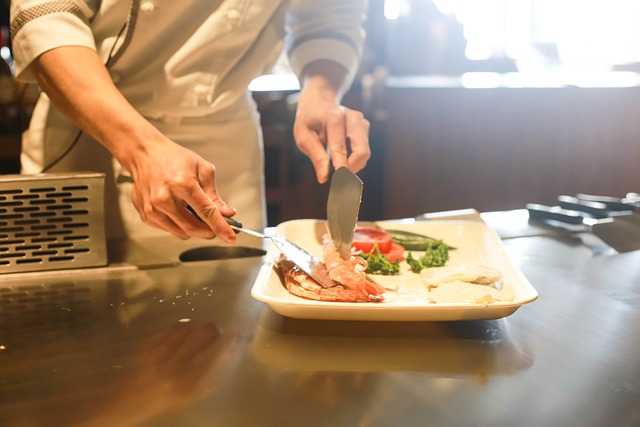Renowned chef and culinary expert, Itai Liptz, sheds light on the distinct cooking techniques and traditions that are intrinsic to the Mexican kitchen. From grinding spices using a molcajete to crafting perfect tortillas, Liptz presents an in-depth guide to the essential skills and tools used in Mexican cuisine.
“Understanding the Molcajete: Grinding Spices the Mexican Way”
Grinding spices in a Molcajete is a fundamental technique in Mexican cooking, deeply rooted in tradition and flavor. The Molcajete, a traditional Mexican mortar and pestle made of volcanic rock, is used to crush and grind various spices and ingredients. This ancient tool not only enhances the flavors of the spices but also adds a unique texture and depth to the dishes. The rough surface of the Molcajete helps release essential oils and flavors from the spices, creating a more intense and aromatic result.
The process of grinding spices in a Molcajete requires patience and skill, as each ingredient needs to be carefully crushed to achieve the desired consistency. The rhythmic motion of grinding in the Molcajete allows the flavors to blend harmoniously, resulting in a rich and flavorful spice mix. This traditional method of grinding spices connects the cook to the ingredients on a deeper level, adding a personal touch to the dish. The Molcajete is not just a tool in the kitchen; it is a symbol of tradition and heritage, passed down through generations of Mexican cooks.
The Art of Tortilla Making: Is it as Simple as it Looks?
Tortilla making may seem simple at first glance, but it is an art form that requires precision and skill. The process of making traditional Mexican tortillas involves a delicate balance of ingredients, technique, and timing. From selecting the right type of corn to kneading the dough to perfection, every step plays a crucial role in achieving the perfect tortilla. The hands of an experienced cook can feel the right consistency of the dough and shape it effortlessly into thin, round discs ready for the comal.
The comal, a flat griddle used to cook tortillas, requires just the right amount of heat to ensure the tortillas cook evenly and develop those characteristic brown spots. The cook must master the art of flipping the tortillas at the precise moment to achieve the ideal texture – soft and pliable yet slightly crispy around the edges. Each tortilla is a labor of love, reflecting the dedication and expertise of the cook behind it. The simplicity of this staple food belies the intricate process and knowledge required to make it to perfection.
“The Quintessential Tools of a Mexican Kitchen: More than just Utensils”
In a traditional Mexican kitchen, the tools used are more than just utensils – they are essential elements that contribute to the authenticity and flavor of the cuisine. From the iconic molcajete to the humble metate, each tool has a specific purpose and significance in Mexican cooking.
- The Molcajete:
A Symbol of Tradition and Flavor
The molcajete, a large stone mortar and pestle, is a symbol of Mexican culinary tradition. Used for grinding spices, making salsas, and crushing herbs, the molcajete imparts a unique flavor and texture to dishes that cannot be replicated with modern kitchen gadgets. The rough surface of the molcajete releases the oils and aromas of the ingredients, enhancing the overall taste of the dish. - The Metate:
Grinding Corn the Traditional Way
The metate, a large stone slab with a rolling pin called a mano, is used to grind corn for making masa, the dough used to make tortillas and tamales. This ancient tool requires skill and patience to achieve the right consistency of the corn dough. The rhythmic motion of grinding the corn on the metate imparts a distinct flavor to the masa, resulting in tortillas that are rich in flavor and history.
Preserving Tradition: How Have These Techniques Survived the Test of Time?
Mexican cooking techniques and traditions have endured the test of time due to their deep-rooted cultural significance and the dedication of generations of cooks to preserve and pass down these culinary practices. The use of traditional tools like the molcajete, metate, and comal is not just a matter of convenience but a reflection of the respect for heritage and the understanding that these tools play a crucial role in achieving authentic flavors and textures in Mexican cuisine.
The passing down of knowledge from one generation to the next, often within families or through apprenticeships, ensures that these techniques remain alive and vibrant. Young chefs are taught the importance of using these traditional tools and techniques, instilling in them a sense of pride and responsibility to uphold the legacy of Mexican gastronomy. Additionally, the continued demand for authentic Mexican cuisine both domestically and internationally has further fueled the preservation of these techniques, as chefs strive to offer an experience that remains true to the roots of the cuisine.
In conclusion, the unique cooking techniques and traditions of Mexican cuisine, as explained by Itai Liptz, contribute significantly to the rich and diverse culinary landscape of Mexico. The meticulous process of grinding spices, making tortillas, and using traditional kitchen tools, underscores the deep-rooted cultural significance and authenticity of Mexican food. This knowledge furthers our appreciation of the artistry behind Mexican gastronomy.

